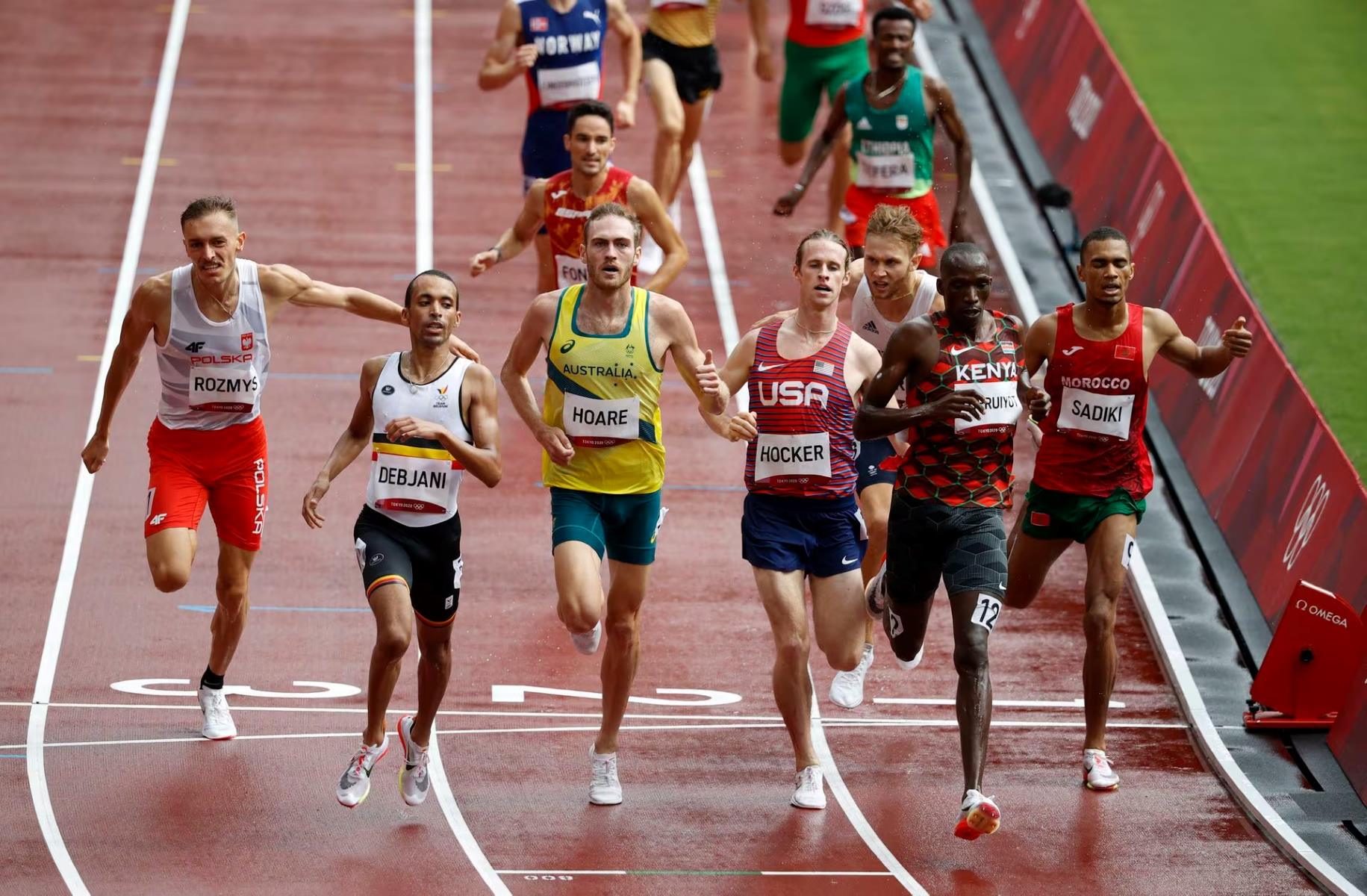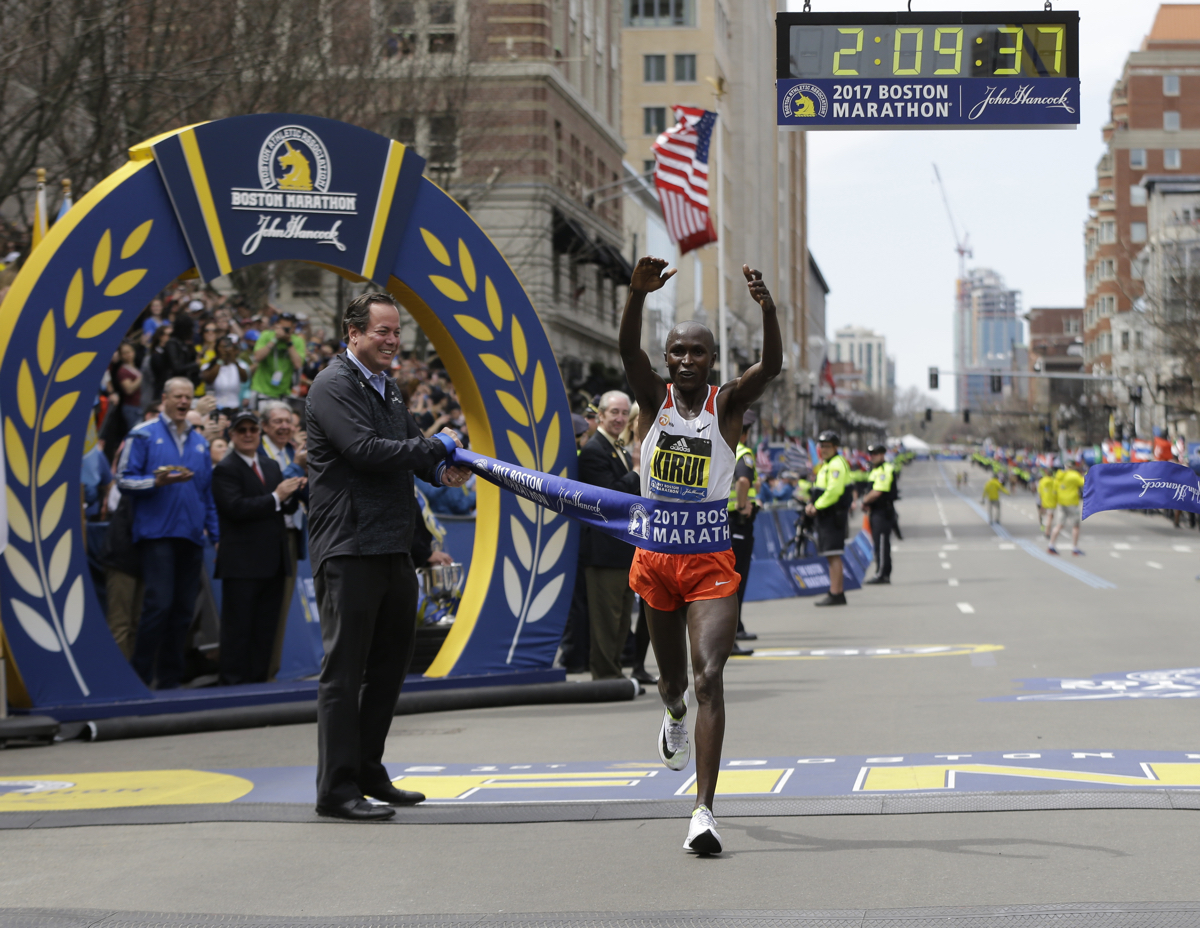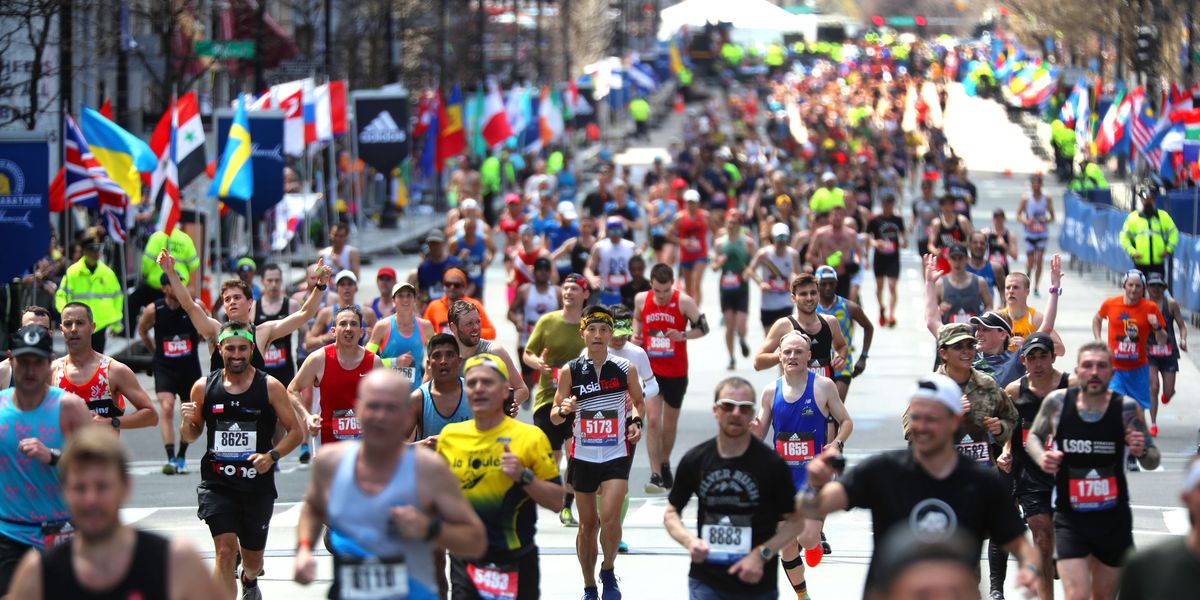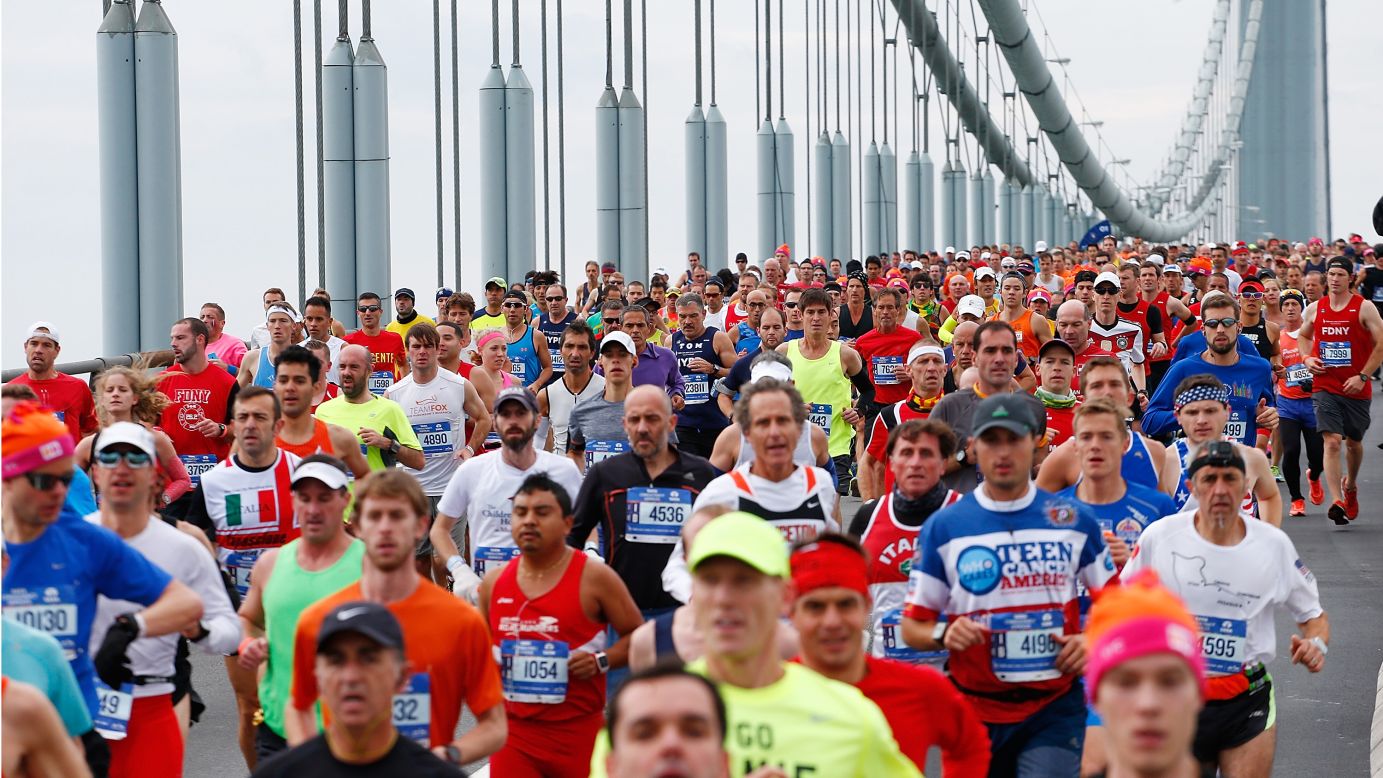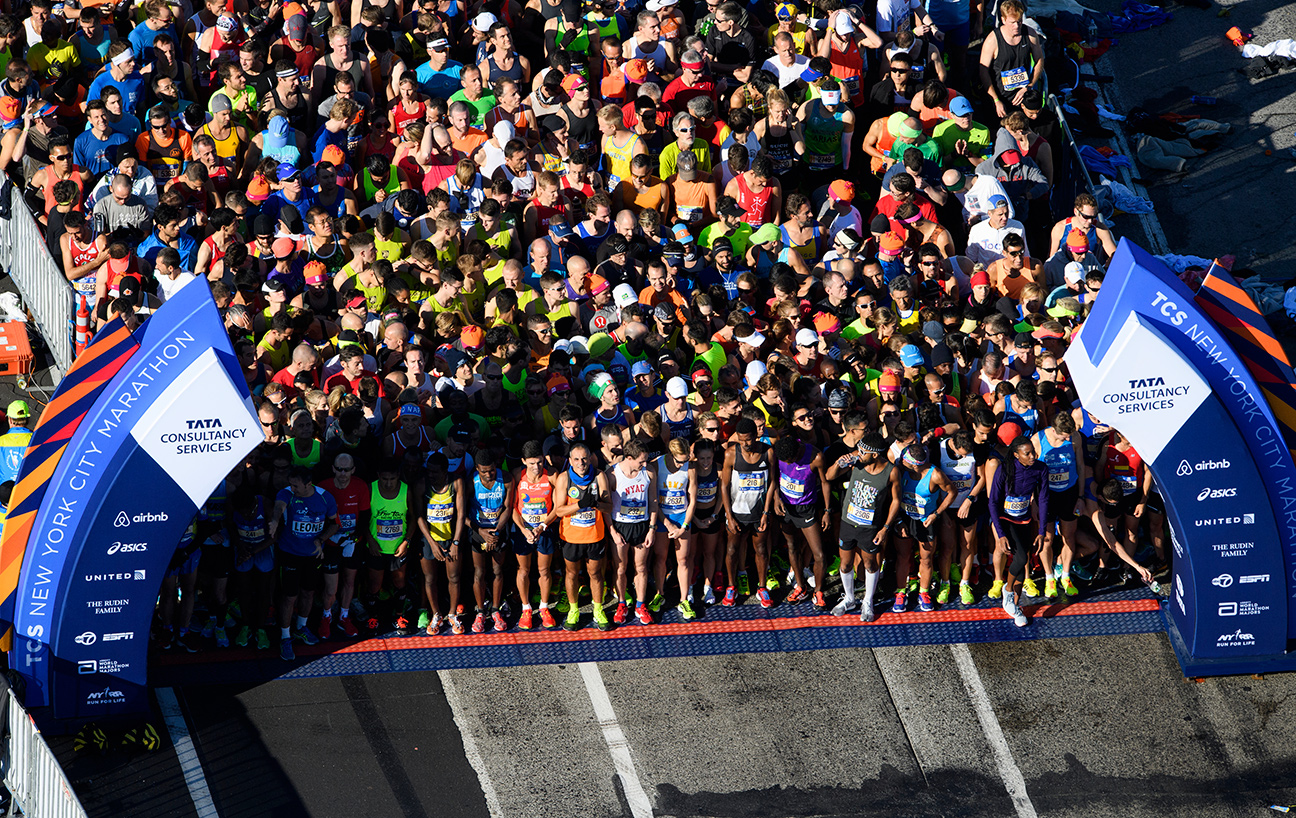Home>Misc>Featured>Why Are Kenyans Good At Long Distance Running
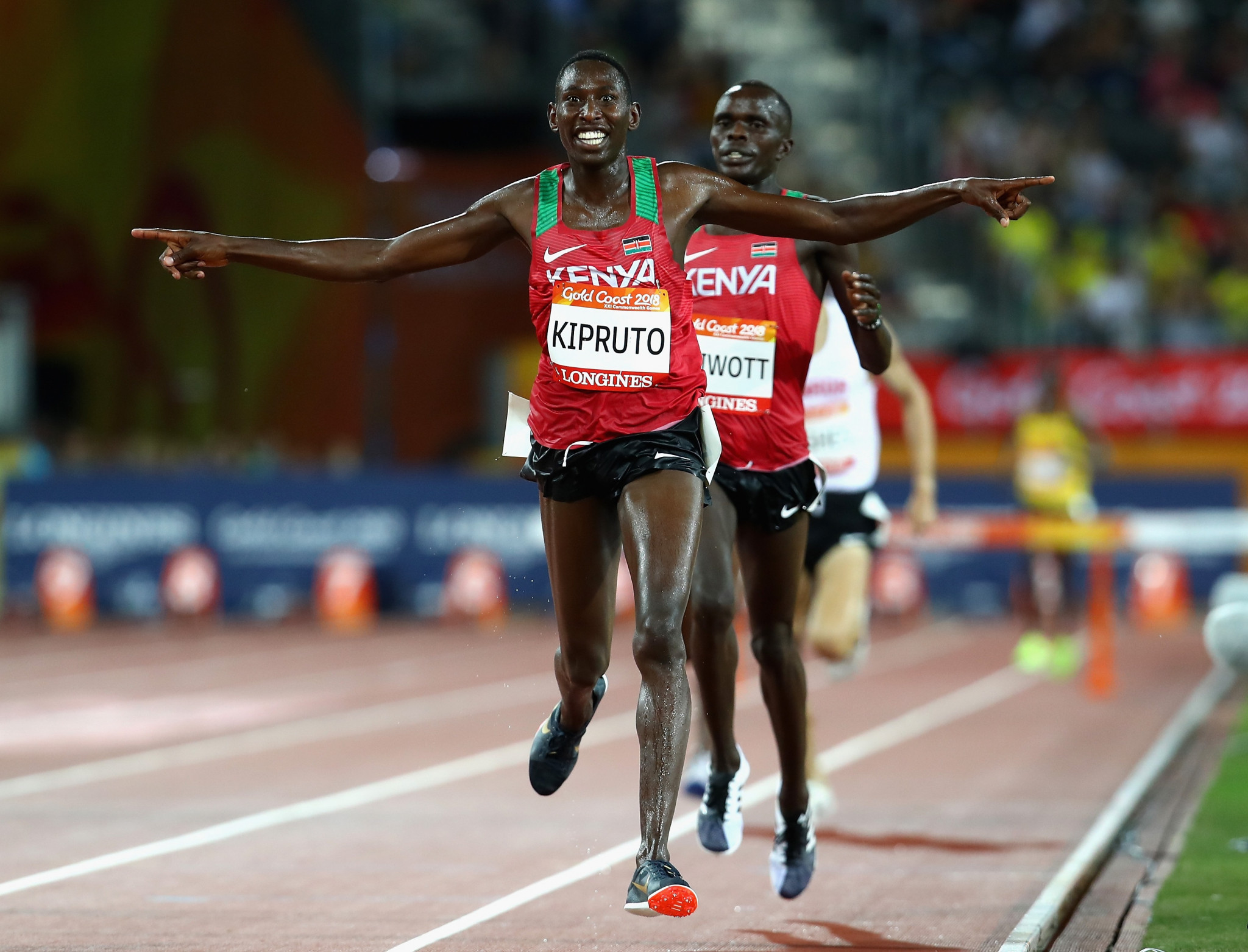

Featured
Why Are Kenyans Good At Long Distance Running
Modified: January 2, 2024
Discover why Kenyans excel in long distance running with our featured article. Uncover the secrets behind their endurance and training methods.
Introduction
Kenya is renowned for its exceptional talent in long-distance running. The country consistently produces elite athletes who dominate marathons and endurance races around the world. From legendary names like Kipchoge Keino and Paul Tergat to current stars like Eliud Kipchoge and Brigid Kosgei, Kenyan runners have captivated the sports world with their incredible performances and record-breaking achievements.
The Kenyan dominance in long-distance running is a phenomenon that has puzzled researchers, coaches, and athletes alike. What is it that sets Kenyans apart and allows them to excel in one of the most physically demanding disciplines? Is it simply a matter of genetics, or are there other factors at play?
This article will delve into the various factors contributing to Kenya’s success in long-distance running. We will explore the physiological advantages that Kenyan athletes possess, the cultural factors that nurture a love for running, the unique training methods employed, and the government support that propels their athletic development.
Understanding the secrets behind Kenya’s long-distance running prowess not only offers insights into the factors that contribute to athletic excellence but also sheds light on the potential for other nations to unlock their own sporting potential.
So, let’s lace up our shoes and embark on a journey to uncover the fascinating world of Kenyan long-distance running.
Kenyan Dominance in Long Distance Running
For decades, Kenyan runners have dominated the world stage in long-distance running events. From the Olympic Games to major marathons across the globe, Kenyans have consistently demonstrated their remarkable abilities and shattered records along the way. This undeniable dominance has led many to question what makes Kenyan athletes so exceptional in this particular discipline.
When examining the statistics, it’s clear that Kenyan athletes are a force to be reckoned with. In recent years, they have claimed victory in major events such as the Boston Marathon, the New York City Marathon, and the London Marathon. Kenyan athletes have also set astonishing world records in various distances, including the marathon and the half marathon.
One of the most remarkable aspects of Kenya’s dominance in long-distance running is the sheer number of world-class athletes the country produces. Not only is Kenya known for its elite runners, but it also has a large pool of talented athletes competing at a high level. This depth of talent is unlike anything seen in other nations, giving Kenya a significant edge in long-distance running races.
Over the years, Kenyan runners have developed a reputation for their exceptional endurance and sustained speed. They often exhibit remarkable mental toughness, maintaining a consistent pace throughout races and displaying the ability to perform well in various weather conditions.
Kenyan runners also tend to excel in both road racing and cross-country events. This versatility speaks to their ability to adapt to different terrains and racing formats, making them formidable competitors in a range of long-distance disciplines.
While the reasons behind Kenyan dominance in long-distance running are multi-faceted, it is clear that the combination of physiological advantages, cultural factors, unique training methods, and government support all contribute to their exceptional performances on the world stage. In the following sections, we will delve deeper into these factors to gain a better understanding of why Kenyans excel in long-distance running.
Factors Contributing to Kenyan Success
Kenya’s remarkable success in long-distance running can be attributed to a combination of various factors. These factors work in synergy to create an environment that nurtures and propels athletes towards greatness. Let’s explore some of the key factors that contribute to the success of Kenyan runners.
1. Physiological Advantages: Kenyan athletes possess certain physiological advantages that give them an edge in long-distance running. These include a high altitude upbringing, which results in increased red blood cell production and enhanced oxygen-carrying capacity. The conducive environmental conditions and rigorous daily physical activities also contribute to the development of efficient cardiovascular systems and superior running economy.
2. Cultural Factors: Running is deeply ingrained in Kenyan culture, with a long history of producing talented athletes. Children in rural areas often have to run long distances as part of their daily activities, such as walking to school or fetching water. This constant physical activity from a young age develops a strong foundation and a natural aptitude for running. Running is also seen as a pathway to success and a means of escape from poverty in many Kenyan communities, motivating aspiring athletes to work hard and chase their dreams.
3. Training Methods: Kenyan runners follow a unique training approach that focuses on high mileage, consistency, and a mix of tempos and intervals. Their training programs emphasize long runs at a steady pace, allowing them to build endurance and stamina. Additionally, they incorporate regular hill training, which strengthens leg muscles and improves efficiency in tackling varied terrains. The disciplined and structured training regimen of Kenyan athletes plays a crucial role in their exceptional performances.
4. Government Support: The Kenyan government recognizes the importance of sports and has implemented various measures to support aspiring athletes. This includes funding elite training camps, providing access to world-class facilities, and offering financial incentives for successful athletes. The government’s investment in sporting infrastructure and development programs has created a conducive environment for athletes to thrive and reach their full potential.
These factors, along with others such as a strong sense of community and mentorship within the running community, contribute to the consistent success of Kenyan athletes in long-distance running. It is the synergy between these factors that has propelled Kenyan runners to the forefront of the international running scene.
Physiological Advantages
One of the key factors contributing to the success of Kenyan athletes in long-distance running is the range of physiological advantages they possess. These advantages play a crucial role in their ability to perform at an elite level and consistently outperform athletes from other nations.
1. Altitude Training: Many Kenyan runners grow up and train in high-altitude regions, such as the Rift Valley, which sits at an elevation of over 2,000 meters. This exposure to high altitude results in increased red blood cell production and improved oxygen-carrying capacity, also known as altitude acclimatization. The thin air at higher elevations challenges the body to adapt and become more efficient at utilizing oxygen, giving Kenyan athletes a significant advantage in endurance events.
2. Efficient Running Economy: Kenyan runners are widely recognized for their exceptional running economy, which refers to the energy cost of maintaining a given running speed. Their bodies are incredibly efficient at utilizing energy, enabling them to maintain a fast pace over long distances without excessive fatigue. This efficiency is likely a result of a combination of factors, including genetics, high-altitude upbringing, and a lifetime of consistent running from a young age.
3. Favorable Body Composition: Kenyan athletes tend to have a slim and lightweight body composition, which is advantageous for long-distance running. Their lean bodies and low percentage of body fat minimize the energy expenditure required to carry their weight and help them maintain a more efficient running form. This lightweight build, combined with strong leg muscles, allows them to maintain a fast pace with less strain on their joints and muscles.
4. Mental Toughness: Kenyan runners have a reputation for their mental fortitude and ability to endure physical discomfort. They possess a remarkable ability to maintain focus and push through fatigue during races, enabling them to sustain high-speed efforts for longer periods. This mental toughness, developed through years of training and competition, is vital in long-distance running, where endurance and resilience are key.
These physiological advantages, combined with other factors such as training methods, cultural factors, and government support, provide Kenyan athletes with a solid foundation to excel in long-distance running. While these advantages may not guarantee success on their own, they certainly contribute to the exceptional performances displayed by Kenyan runners on the world stage.
Cultural Factors
Cultural factors play a significant role in Kenya’s dominance in long-distance running. Running is deeply entrenched in Kenyan culture, shaping the lives of individuals and communities across the country. These cultural influences contribute to the development of a strong foundation and a love for running from a young age, laying the groundwork for future success in the sport.
1. Running as a Way of Life: In many Kenyan communities, running is not just a sport but a way of life. Children grow up running long distances as part of their daily activities, such as walking to school, herding livestock, or performing household chores. This constant physical activity from an early age helps to develop endurance, strength, and a natural aptitude for running. It becomes ingrained in their everyday routine, instilling a passion and love for the sport.
2. Community Support and Mentorship: The running community in Kenya is tightly-knit and supportive, often serving as a source of inspiration and mentorship for aspiring athletes. Established runners who have achieved success often act as role models and provide guidance to younger athletes. This mentorship fosters a sense of camaraderie and encourages the pursuit of excellence in the sport.
3. Pursuit of Success and Escape from Poverty: In many Kenyan communities, running is seen as a pathway to success and a means of escaping poverty. The prospect of earning prize money, scholarships, and sponsorship deals motivates aspiring athletes to train hard and dedicate themselves to the sport. Running offers the opportunity for a better life, not just for the individual athlete but also for their families and communities.
4. National Pride and Identity: Kenyan success in long-distance running has become a source of national pride and identity. The achievements of Kenyan athletes on the international stage have united the nation and brought recognition and prestige to their homeland. This pride and sense of national identity further fuel the passion and motivation for young Kenyans to pursue running and excel in the sport.
These cultural factors, combined with the physiological advantages, unique training methods, and government support, create a fertile ground for the development of world-class athletes in Kenya. The cultural emphasis on running, community support, and the pursuit of success contribute to a thriving environment for aspiring athletes to grow, thrive, and achieve remarkable feats in the world of long-distance running.
Training Methods
The training methods employed by Kenyan runners are an integral part of their success in long-distance running. These methods are rooted in endurance, consistency, and a focus on building a strong foundation of fitness. Kenyan athletes undergo rigorous training regimens that enable them to develop the necessary physical and mental attributes needed to excel in the sport.
1. High Mileage: Kenyan runners are known for their high mileage training approach. They often accumulate significant weekly mileage, running upwards of 100 kilometers or more. This high volume of running helps to build a strong aerobic base, improve endurance, and develop the physiological adaptations required for long-distance races.
2. Consistency: Consistency is key in the training of Kenyan athletes. They adhere to a strict training schedule, rarely missing a day of training. This consistency over the long term allows them to gradually improve their fitness and performance. By maintaining a consistent training routine, they are able to build endurance, improve running economy, and enhance mental toughness.
3. Mix of Tempos and Intervals: Kenyan training programs often include a mix of tempos and intervals. Tempo runs are sustained efforts at a comfortably hard pace, improving lactate threshold and teaching the body to run at a faster speed without accumulating excessive fatigue. Intervals, on the other hand, involve shorter, more intense bursts of speed followed by recovery periods. These intervals help to enhance speed, power, and leg turnover.
4. Hill Training: Kenya’s diverse terrain and hilly landscapes have a significant impact on the training methods used by Kenyan runners. Incorporating regular hill training helps to improve strength, power, and running efficiency. Uphill runs build leg muscles and enhance cardiovascular endurance, while downhill runs provide an opportunity to work on running economy and downhill technique.
5. Group Training: Kenyan runners often train in groups or training camps, fostering a collaborative and competitive atmosphere. Group training offers support, motivation, and an opportunity to push each other to higher levels of performance. The camaraderie and shared experiences of training together contribute to the mental toughness and resilience of Kenyan athletes.
Kenyan training methods prioritize building endurance, developing efficient running form, and instilling mental toughness. The combination of high mileage, consistency, tempos, intervals, hill training, and group training creates a strong foundation for success in long-distance running. These training methods, combined with the other factors such as physiological advantages and cultural influences, contribute to Kenya’s continued dominance in the sport.
Government Support
The success of Kenyan athletes in long-distance running can also be attributed to the invaluable support they receive from the Kenyan government. Recognizing the importance of sports as a national asset, the government has implemented various measures to facilitate the development and success of athletes across the country.
1. Funding Elite Training Camps: The Kenyan government invests in elite training camps that provide world-class facilities for athletes to train and prepare for international competitions. These camps offer access to top-notch coaching, sports science expertise, and state-of-the-art training equipment. This support assists athletes in honing their skills and consistently improving their performance.
2. Financial Incentives: The government provides financial incentives to successful athletes as a means to recognize and reward their achievements. Monetary prizes are awarded for winning major races or achieving notable results in international events. These incentives not only serve as motivation for athletes to excel but also provide financial support to help them sustain their training and livelihoods.
3. Scholarships and Education: The government offers scholarships and educational opportunities to promising athletes, ensuring they receive quality education while pursuing their sporting endeavors. This dual support system helps athletes balance their academic and athletic aspirations, encouraging them to excel both on and off the track.
4. Sports Infrastructure: The Kenyan government invests in the development of sports infrastructure to create a conducive environment for athletes to train and compete. This includes the construction of athletic stadiums, tracks, and training facilities across the country. The availability of modern and well-maintained facilities enables athletes to train in optimal conditions, improving their performance and maintaining their overall well-being.
5. Development Programs: The government implements various grassroots development programs that identify and nurture young talent in schools and local communities. These programs provide opportunities for young athletes to receive training, coaching, and exposure to competitions. By investing in the development of future athletes, the government ensures a continuous pipeline of talented individuals who can carry the Kenyan legacy in long-distance running forward.
The support and investment provided by the Kenyan government have been instrumental in the success of Kenyan athletes in long-distance running. By prioritizing sports and the development of athletes, the government has created an ecosystem that fosters excellence and enables athletes to reach their full potential on the international stage.
Challenges Faced by Kenyan Runners
While Kenyan runners have achieved remarkable success in long-distance running, they also face various challenges along their journey to the top. These challenges can hinder their progress and require resilience, determination, and support to overcome. Let’s explore some of the key challenges faced by Kenyan runners.
1. Limited Resources: Many Kenyan athletes come from economically disadvantaged backgrounds, lacking access to adequate resources and facilities. Limited funding for training, proper nutrition, and sports equipment can be a significant obstacle to their development as athletes. The financial burden of pursuing a career in running can also be a challenge, particularly for athletes from marginalized communities.
2. Lack of Medical Support: Health and medical support for Kenyan athletes can be inadequate, especially for those training outside of elite camps. Access to sports medicine, specialized healthcare practitioners, and injury prevention resources may be limited. This lack of medical support can impact the overall well-being of athletes and hinder their ability to recover from injuries effectively.
3. Competition for Limited Opportunities: Kenya’s rich running tradition has created a highly competitive environment for athletes. With a large pool of talent vying for limited opportunities, the competition to secure sponsorships, endorsements, and representation can be fierce. Standing out among the crowd and earning the support needed for advancement can be a significant challenge.
4. Balancing Education and Sport: Education is highly valued in Kenyan society, and many athletes face the challenge of balancing their academic pursuits with their athletic aspirations. Juggling school responsibilities and training can be demanding, requiring strong time management skills and support systems that understand and prioritize the importance of both education and sport.
5. Cultural Expectations: While running is deeply embedded in Kenyan culture, societal pressures and expectations can be both motivating and burdensome. There may be an expectation to succeed in the sport to uplift themselves and their communities, which can sometimes add additional pressure on athletes. Managing these expectations and finding a balance between personal goals and community aspirations can be a challenge.
Despite these challenges, Kenyan runners continue to rise above adversity and achieve remarkable feats in long-distance running. Through determination, hard work, and the support of various stakeholders, they strive to overcome these obstacles and make their mark on the international stage.
Conclusion
The dominance of Kenyan athletes in long-distance running is a result of a perfect storm of factors. From their physiological advantages to the cultural influences, training methods, and government support, every piece of the puzzle contributes to their success on the world stage.
Kenyan athletes possess unique physiological advantages, including altitude acclimatization, efficient running economy, and favorable body composition. These advantages, combined with their mental toughness and endurance, give them an edge in long-distance running events.
Culturally, running is deeply ingrained in Kenyan society, with a long history of producing talented athletes. The supportive community, the pursuit of success, and the desire for a better life create an environment that nurtures and motivates aspiring runners.
The training methods employed by Kenyan athletes, such as high mileage, consistency, tempos, intervals, hill training, and group training, are key to their development and success. These methods build endurance, improve running economy, and instill mental toughness.
The Kenyan government plays a vital role in supporting athletes by funding elite training camps, providing financial incentives, offering scholarships, and investing in sports infrastructure. This support creates opportunities and platforms for athletes to excel and make their mark on the world stage.
However, Kenyan runners also face challenges, such as limited resources, lack of medical support, fierce competition, balancing education and sport, and societal expectations. Overcoming these challenges requires resilience, determination, and support from various stakeholders.
In conclusion, Kenyan dominance in long-distance running is a mesmerizing phenomenon that showcases the harmony between unique physiological attributes, cultural influences, training methods, and government support. The success of Kenyan athletes not only inspires others to pursue their sporting dreams but also provides valuable insights into the potential of human achievement when passion, determination, and support align. The Kenyan legacy in long-distance running continues to evolve and inspire generations of athletes worldwide.
